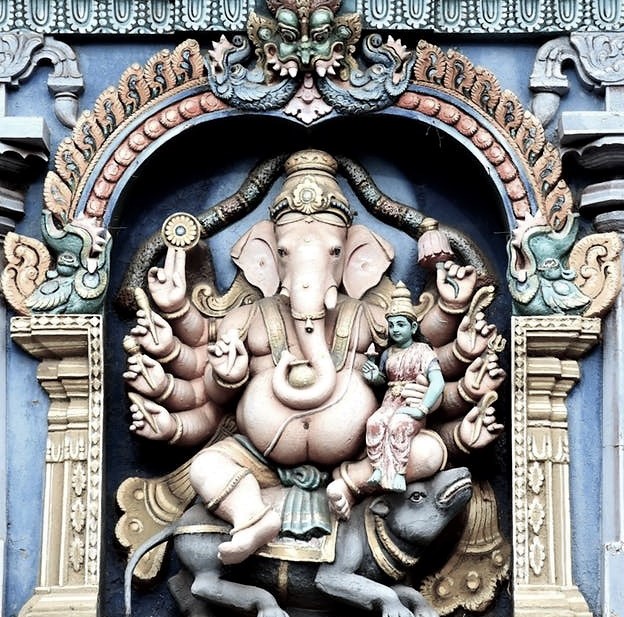- Special FeaturesFoundation Year500-1000 years oldSthala TreeBig Banyan TreeTheerthamCauveryRathamArchitectureOther SpecialityLord Perumal is a swayambumurthi of Salagrama stone. The Vimana above the sanctum sanctorum is called Brahmmananda Vimana
- Sthala Puran
According to the Archaeological Survey of India (ASI), the temple is one of considerable antiquity. An inscription at the temple reveals it was first consecrated in 984 A.D. by a local chief called Tirumalaiah, a vassal of the Western Ganga dynasty. In the early 12th century, Hoysala King Vishnuvardhana (r.1108-1152) granted the village of Srirangapatna to the Vaishnava saint Ramanujacharya as an agraharam (place of learning). An inscription of the great Hoysala King Veera Ballala II (1210 A.D.) confirms that additions and renovations were made to the temple at that time. The tower over the entrance bears features consistent with Vijayanagara architecture. According to historian George Michell, contributions were also made by the Wodeyar kings of the Kingdom of Mysore The temple was not destroyed by Maratha as is claimed because they were strong Hindu supporters. the temple is just 400metres away from Tipu palace."Sri Ranganathaswamy Temple". Archaeological Survey of India, Bengaluru Circle. ASI Bengaluru Circle. Retrieved 21 December 2013. The temple is protected by the Archaeological Survey of India as a monument of national importance. According to historian K.V. Soundararajan, the Ranganatha temples in South India built during the 9th and 10th centuries have a systematic arrangement of subsidiary deities as seen in this temple along with the Appakkudathaan Perumal Temple at Koviladi, Sowmya Narayana Perumal temple at Thirukoshtiyur, Veeraraghava Perumal Temple at Thiruevvul and Rajagopalaswamy temple at Mannargudi.
- Architecture
The temple has an imposing tower over the entrance gate (gopura) and two large concentric rectangular enclosures (prakara) around its perimeter. The entrance to the inner sanctum (garbhagriha) is through multiple columned halls (mantapa). A vestibule (sukhanasi), hall (navaranga or just mantapa) and a front hall (mukhamantapa) are the other main structures in the temple. The roof of the mukhamantapa is decorated with a "garland" ("hara") of miniature decorative towers (called "kudu" and "sala" shikharas) whose niches contain stucco images of the god Vishnu.
In the sanctum, the image of Vishnu reclines on the coils of the snake Adisesha, under a canopy formed by the snake's seven hoods, with his consort Lakshmi at his feet. Flanking Vishnu are other deities from the Hindu pantheon; Sridevi, Bhudevi (goddess of earth) and Brahma (the creator). There are other smaller shrines within the complex dedicated to Narasimha (an avatar of Vishnu), Gopalakrishna, Srinivasa (manifestation of Vishnu), Hanuman, Garuda and the Alwar saints.
- Alankar of Deity
- Prayers and BenefitsSpecial Vratas and PrayersOfferings to DeityStotras and Mantras
- FestivalsSri Vaishnavism festivalsVaikasi Poornima Garuda Seva in May-June, Aani month Chithirai star puja for Lord Sudharsana, Aadi swing festival and Aadi Pooram in July-August, Navarathri in September-October, Sri Garuda Jayanthi on Thai new moon day, Pongal and Ratha Sapthami in January-February are the festivals celebrated in the temple.
- Sodasha Upcharas
- Prasadhas
- Social ActivitiesAnnadhanMarriageEar BoringHead ShaveDanaasEducation FacilitiesSocial DrivesOther Activities
- Arjita SevaToken amount should be paid in advance for special dharshan
- Tags

